Observability has become a cornerstone for managing and maintaining modern infrastructure. Simply put, observability is the ability to understand the internal state of a system based on the data it generates. It allows teams to gain deep insights into system behavior, troubleshoot issues, and ensure performance and reliability.
Often confused with monitoring, observability goes beyond simply collecting metrics. While monitoring focuses on predefined metrics and alerts, observability emphasizes a holistic view of system health.
It enables engineers to answer unexpected questions and debug complex issues by analyzing telemetry data in real time. This makes it especially vital for dynamic, distributed systems like microservices and cloud-native architectures.

Are you also searching for this question's answer? So, you are at the right place. In this blog, we will explore the benefits of transitioning to an open-source observability stack. We'll discuss the key components of an observability framework, compare proprietary and open-source solutions, and provide a step-by-step guide to migrating.
Whether you're looking to reduce costs, increase flexibility, or gain greater control over your infrastructure, open-source tools offer powerful options for enhancing observability.
An open-source observability stack is built on four key components—metrics, logs, traces, and visualization. Together, these elements provide a comprehensive framework for monitoring and troubleshooting modern systems.
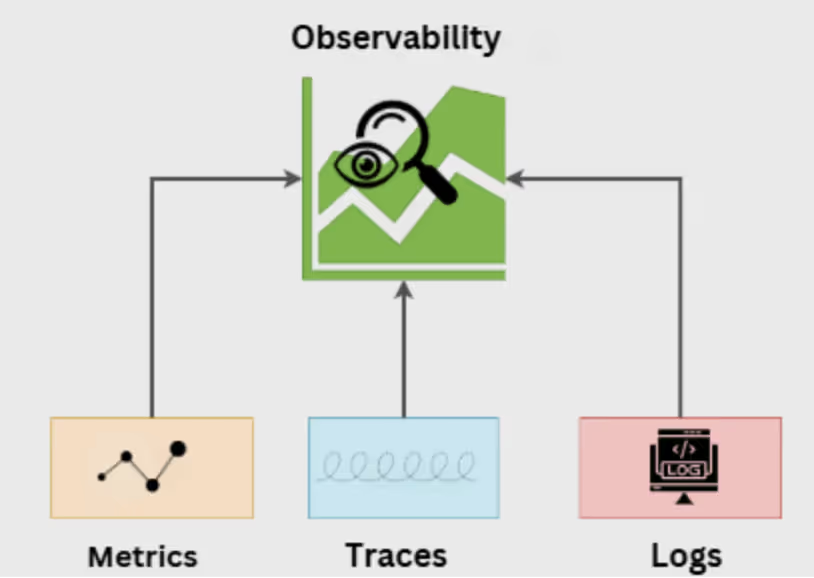
Metrics provide quantitative data about system performance, resource usage, and application health. Tools like Prometheus, Graphite, and OpenTelemetry are widely used for collecting, storing, and querying metrics.
Use Cases:
Logs are time-stamped records of system events, providing detailed insights into system behavior and errors. Open-source tools like Loki, Elasticsearch, and Fluentd are commonly used for log aggregation and search.
Use Cases:
Traces track the flow of requests across distributed systems, capturing details about latency and performance at each step. Tools such as Tempo, Jaeger, and OpenTelemetry enable distributed tracing for complex architectures.
Use Cases:
Visualization tools like Grafana bring together metrics, logs, and traces in unified dashboards, providing actionable insights. Grafana also supports alerting, helping teams stay informed of critical issues in real-time.
Use Cases
By integrating these components, an open-source observability stack enables organizations to achieve full visibility into their systems while offering flexibility, scalability, and cost-effectiveness.
Want to read more about open obsevability? Read our article, “ Beginners Guide to Open Source Observability — Part 1.”
Adopting an open-source observability stack offers numerous advantages that empower organizations to manage their infrastructure more effectively while maintaining flexibility and cost efficiency. Let’s take a look at them in detail:
One of the most significant benefits of open-source observability tools is cost savings. Unlike proprietary solutions, which often require expensive subscriptions and licensing fees, open-source tools eliminate vendor lock-in and allow organizations to allocate resources more efficiently. With these tools, you pay only for the infrastructure you use, reducing overall expenses while maintaining high-quality observability.
Open-source tools provide unmatched flexibility, enabling organizations to tailor their observability stack to their unique needs. You can select and integrate only the tools relevant to your infrastructure, whether it’s Prometheus for metrics, Loki for logs, or Tempo for tracing. Custom dashboards, plugins, and configurations ensure your observability setup aligns perfectly with your workflows and goals.
As your infrastructure grows, open-source tools are built to scale horizontally. Whether managing additional data sources or expanding into a distributed system, tools like Grafana, Prometheus, and Jaeger can handle increasing workloads efficiently. This scalability ensures that your observability stack evolves alongside your infrastructure without incurring significant additional costs.
The open-source observability ecosystem benefits from a vibrant global community of developers, contributors, and users. This community-driven approach ensures continuous improvement, regular updates, and a wealth of plugins and integrations. Open forums and resources provide accessible support, enabling teams to resolve challenges quickly and innovate using shared knowledge.
By leveraging the cost savings, flexibility, scalability, and community support offered by open-source observability tools, organizations can enhance their infrastructure management while staying agile and future-ready.
Transitioning to an open-source observability stack requires careful planning to ensure a smooth process that meets your organization’s needs. By assessing your current requirements, selecting the right tools, and defining clear goals, you can create an effective strategy for migration.
The first step in planning your transition is to evaluate your existing observability framework. Identify the key metrics, logs, and traces you monitor with your current solution.
For example, metrics such as CPU utilization, error rates, or request latency may be critical to your operations.
Similarly, logs capturing application errors or traces that map request flows across services should be cataloged. Once you have a clear understanding of your requirements, map them to open-source tools that provide equivalent or enhanced functionality.
Selecting the right combination of tools is crucial to building a robust observability stack.
Your choice should consider factors such as:
A commonly used open-source stack includes:
GitHub Links
This combination provides comprehensive observability while allowing flexibility to address specific needs.
Establishing clear objectives for the transition ensures alignment between your observability strategy and organizational priorities. Common migration goals include:
By thoughtfully assessing your current requirements, choosing the right tools, and setting clear goals, you can lay a strong foundation for a successful migration to an open-source observability stack.
Implementing an open-source observability stack involves configuring tools for metrics, logs, traces, and visualization. By setting up each component systematically, you can create a unified and efficient observability framework.
Let’s explore how you can accomplish this and the tools that can help you achieve it.
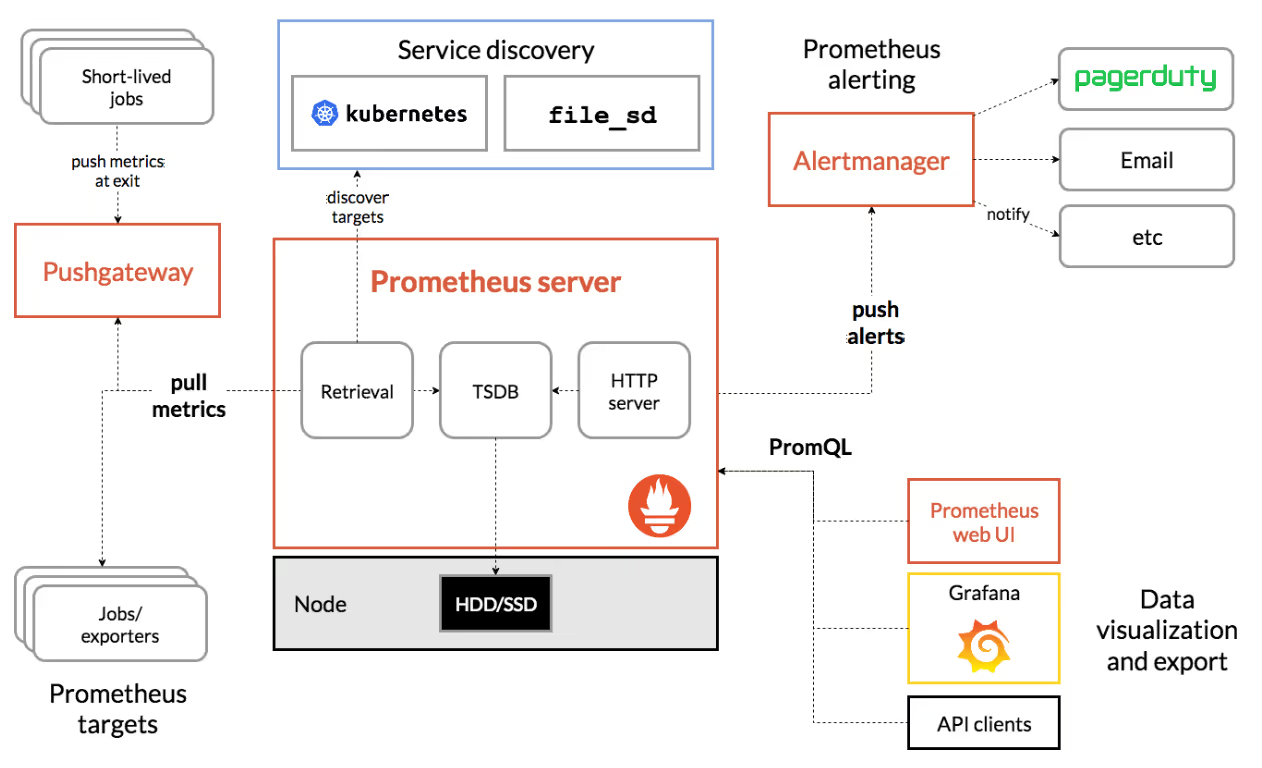
Prometheus is a powerful tool for collecting and querying metrics from various sources.
Want to know more about Prometheus? Read this, Doc!
Loki provides scalable log aggregation and query capabilities tailored for modern systems.
Get a complete insight about Grafana Loki from this Document.

Tempo enables you to collect and analyze distributed traces, making it easier to understand request flows in complex architectures.
Also, Read more about Tempo through this Doc.
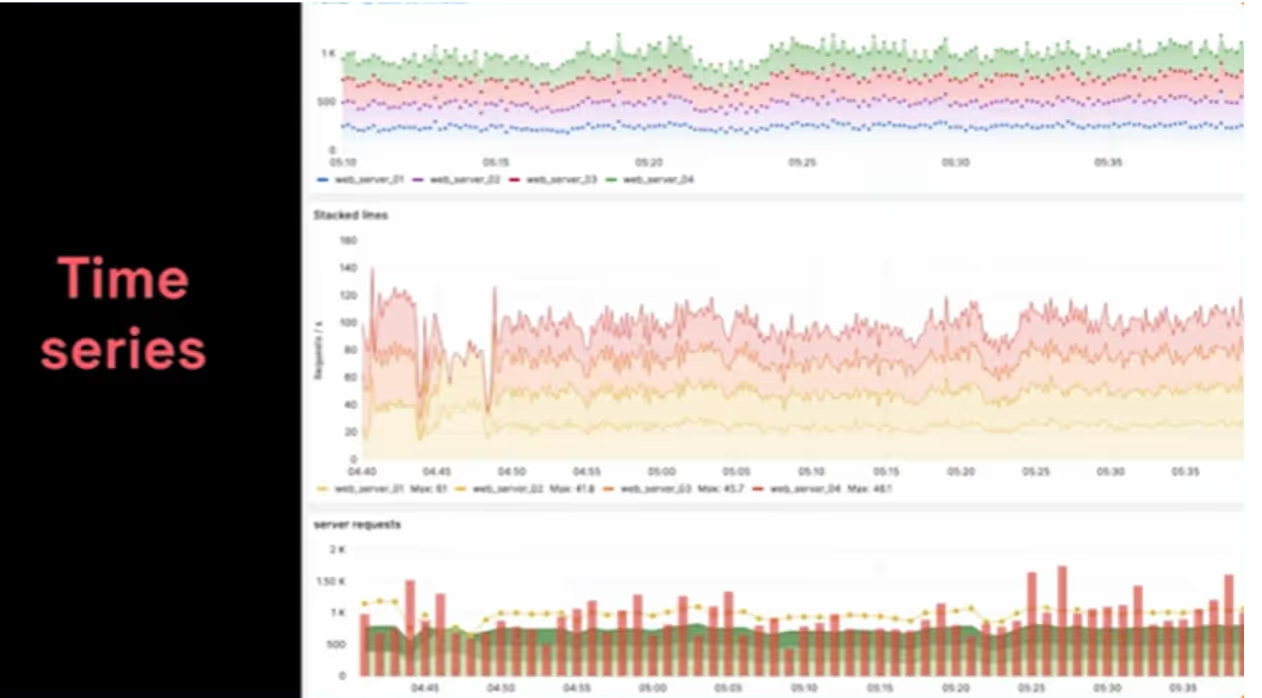
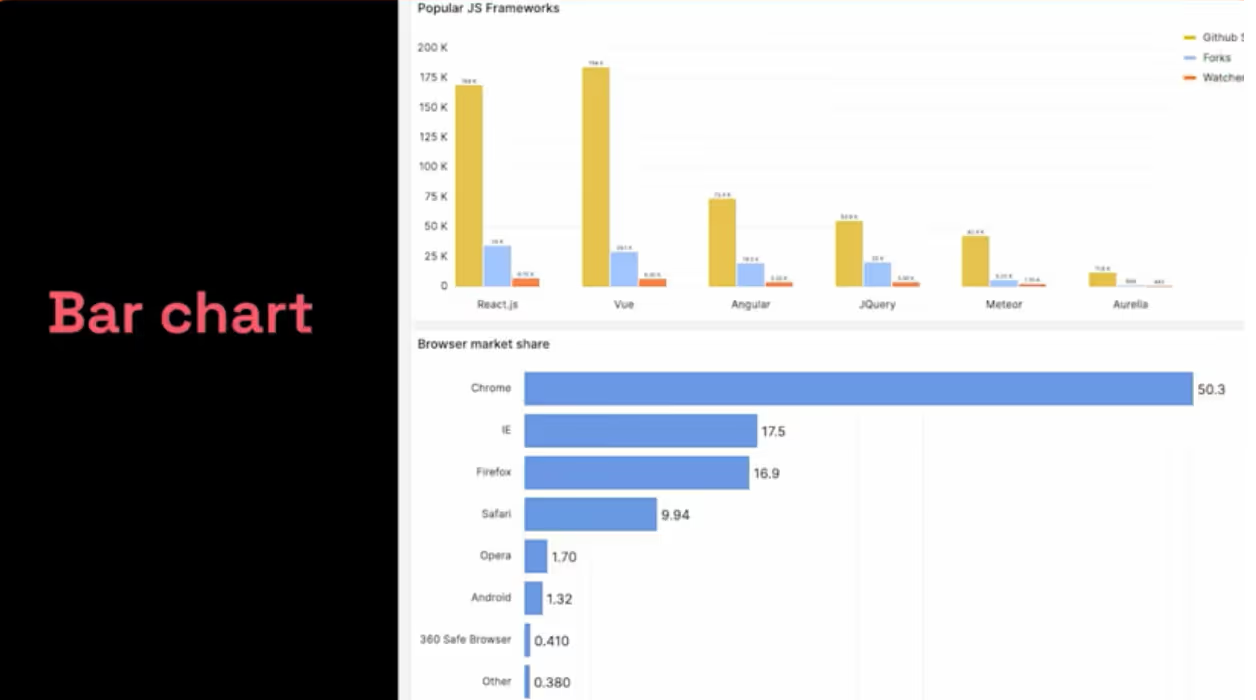
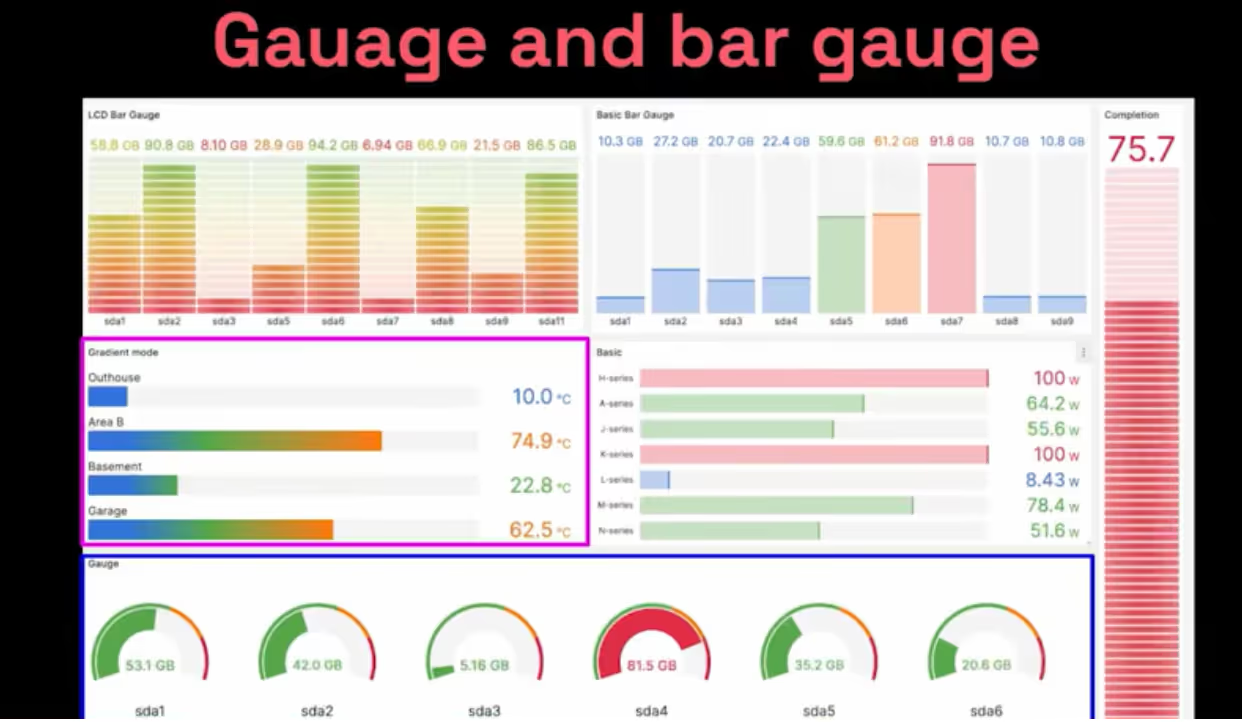
Grafana ties the observability stack together by providing a unified interface for metrics, logs, and traces.
Want to know more about visualization in Grafana? Watch these videos-
By setting up Prometheus, Loki, Tempo, and Grafana in an integrated manner, you can build a comprehensive and open-source observability stack that meets your organization’s needs effectively.
Transitioning to an open-source observability stack can offer significant benefits, but it’s not without challenges. Addressing these hurdles effectively ensures a smooth migration and long-term success. Let’s look into them in detail below.
One of the primary challenges is moving data from proprietary solutions to open-source tools. Exporting logs, metrics, and traces in compatible formats can be difficult, especially when vendor-specific formats or APIs are involved.
How Can It Be Solved?
Focus on transitioning key data required for current operations. Tools like OpenTelemetry can act as a bridge, allowing you to collect data in a standardized format that integrates with open-source platforms like Prometheus, Loki, and Tempo. For historical data, consider retaining access to your previous solution for reference until the transition is complete.
Adopting open-source tools often requires teams to learn new interfaces, query languages, and management techniques. Without adequate training, this learning curve can slow adoption and impact productivity.
How Can It Be Solved?
Provide structured training for your teams, covering the configuration, usage, and troubleshooting of tools like Prometheus, Loki, Tempo, and Grafana. Create internal documentation, share community resources, and encourage experimentation to build expertise. Designating team champions or bringing in consultants can also accelerate learning.
Deploying and managing open-source tools in production environments requires careful planning to ensure reliability, scalability, and performance. Unlike proprietary solutions, where infrastructure is abstracted, open-source tools often require hands-on management.
How Can It Be Solved?
Use container orchestration platforms like Kubernetes to deploy and scale open-source tools efficiently. Employ monitoring and alerting to track the performance of your observability stack itself, ensuring it doesn’t become a bottleneck. Regular updates and maintenance are also critical to staying secure and benefiting from the latest features.
By addressing data migration, equipping your teams with the necessary skills, and proactively managing infrastructure, you can overcome the challenges of transitioning to an open-source observability stack while unlocking its full potential.
Integrating your existing systems with an open-source observability stack is crucial for creating a cohesive and efficient monitoring environment.
Whether it's third-party tools, custom applications, or optimizing alerts, a seamless integration ensures that your infrastructure remains connected and accessible. Let’s learn about it in detail.
Many organizations rely on cloud-native monitoring services like AWS CloudWatch, Azure Monitor, or Google Cloud Monitoring for collecting metrics and logs from cloud environments. These tools offer valuable insights but need to be integrated into your open-source observability stack to centralize visibility and avoid silos.
How to Integrate
Benefits: This integration ensures you can access all your data from a single interface, making it easier to correlate events across platforms and troubleshoot effectively.
For businesses running custom applications, capturing and visualizing application-specific telemetry is essential for gaining a complete observability picture.
How to Integrate:
Use OpenTelemetry, an open-source standard, to instrument your applications. OpenTelemetry collects metrics, logs, and traces from your custom systems and exports them to tools like Prometheus, Loki, or Tempo.
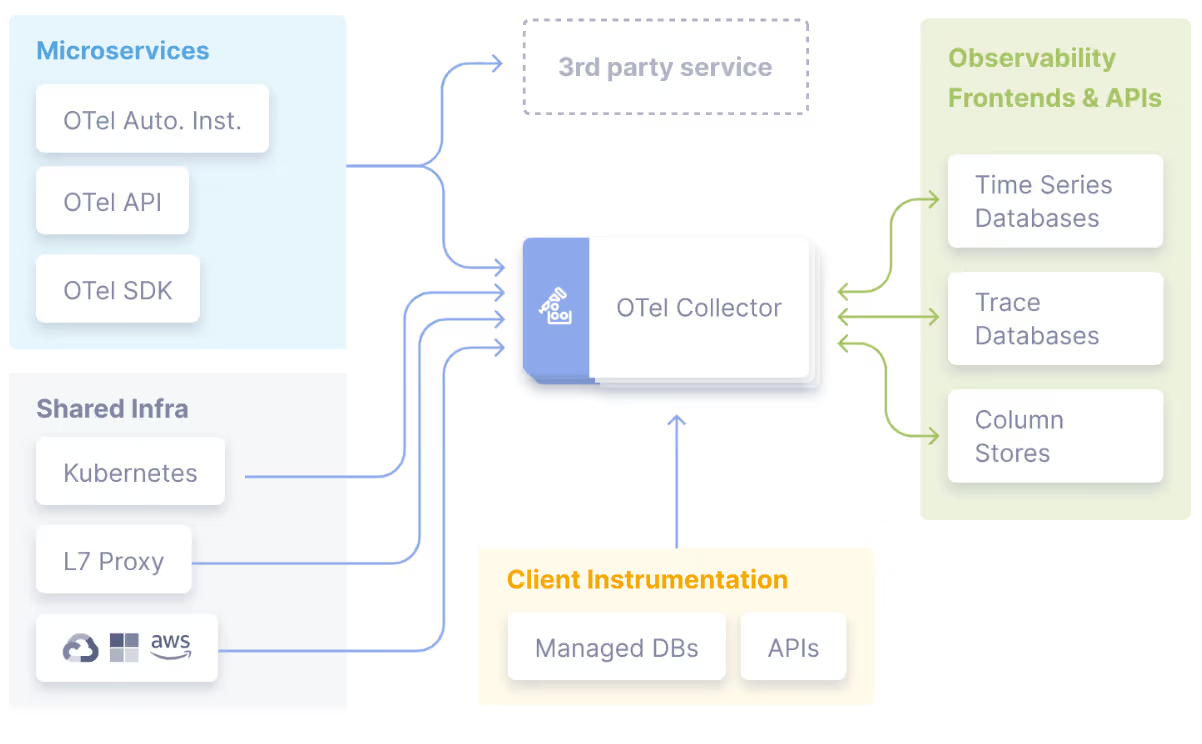
Example: A custom e-commerce platform can use OpenTelemetry to track transaction metrics, log errors, and trace API calls across services, all of which can be visualized in Grafana for comprehensive monitoring.
Want to know more about OpenTementry? Read this Doc.
While integrating tools and data sources is vital, managing alerts and reducing noise in the new observability stack is equally important to maintain efficiency and focus. This is where Doctor Droid becomes invaluable.
Doctor Droid employs AI-powered insights to identify redundant or low-priority alerts, ensuring that only critical notifications are sent to your teams. This significantly reduces alert fatigue and enables faster response times.
Beyond noise reduction, Doctor Droid offers root cause analysis (RCA) and postmortem insights to help you understand recurring issues and improve alert configurations over time.
Playbooks guide teams through resolving incidents step-by-step, ensuring consistent responses and reducing the time to resolution.
How Does It Work?
Integrate Doctor Droid with tools like Grafana and Prometheus to analyze alerting patterns, optimize thresholds, and automate prioritization. This ensures your team remains focused on solving meaningful problems.
Watch this video to learn how Doctor Droid can help you reduce noise and fix issues faster.
An open-source observability stack offers significant cost-saving potential, but managing storage, queries, and alerting efficiently is key to optimizing expenses while maintaining performance.
Implementing these strategies can help you maximize value without compromising observability.
Long-term data retention can be a major cost factor in any observability setup.
Choose storage solutions that balance performance and cost.
For example, use local storage for short-term, high-performance data access and move older logs, metrics, or traces to affordable cloud-based storage tiers, such as Amazon S3 Glacier or Google Cloud Coldline.
This hybrid approach ensures cost-effective data retention while maintaining accessibility when needed.
Click here to know more about Amazon S3 Glacier, and Google Cloud Coldline.
Frequent or inefficient queries can increase data processing costs and strain your infrastructure.
Optimize Grafana queries by reducing the time range and data resolution where possible.
Aggregate metrics at meaningful intervals instead of querying raw, high-frequency data. Additionally, use Grafana’s data transformation features to filter unnecessary information, streamline dashboards and reduce backend load.
Alerting configurations often result in excessive processing and noise, which can inflate costs and reduce operational efficiency.
Employ Doctor Droid to analyze alerting patterns and prioritize critical alerts.
With its real-time alert noise reduction, Doctor Droid minimizes unnecessary processing by filtering redundant or non-actionable alerts. This helps reduce system overhead while ensuring your teams remain focused on meaningful incidents.
By strategically managing storage, queries, and alerts, you can effectively optimize the cost of running an open-source observability stack, making it a scalable and budget-friendly solution for your organization.
After transitioning to an open-source observability stack, it’s essential to establish practices that ensure the new system operates effectively and your teams are well-equipped to use it. These best practices focus on validation, optimization, and team enablement. Let’s look into it in detail.
A critical first step post-migration is to verify that the new stack meets your observability requirements.
Strategy:
For example, verify that latency metrics in Prometheus match those previously reported by your old tool. Test trace completeness in Tempo to confirm that all service dependencies are captured.
Testing Alerts:
Simulate scenarios that trigger alerts to ensure thresholds and notifications are configured correctly, avoiding missed incidents.
Keeping dashboards and alerts relevant and effective requires regular updates and reviews.
Strategy
Alert Maintenance
The success of the new observability stack depends on your team’s ability to use it effectively.
Strategy:
By validating your setup, maintaining dashboards and alerts, and investing in team training, you can maximize the efficiency and adoption of your open-source observability stack, ensuring long-term success.
Transitioning to an open-source observability stack is a strategic decision for organizations looking to improve visibility, reduce costs, and gain greater control over their infrastructure. With tools like Prometheus, Loki, Tempo, and Grafana, businesses can create a scalable, flexible, and efficient observability framework tailored to their unique needs. By carefully planning the migration, integrating existing systems, and following post-migration best practices, teams can overcome challenges and unlock the full potential of open-source observability.
However, managing such a transition effectively requires optimizing workflows and alerting mechanisms. This is where Doctor Droid becomes an invaluable companion. Its features, such as real-time alert noise reduction, RCA and postmortem insights, and automated playbooks, streamline incident management and ensure teams remain focused on critical tasks.
Doctor Droid complements open-source tools by reducing operational overhead and enhancing overall observability efficiency.
Try Doctor Droid — your AI SRE that auto-triages alerts, debugs issues, and finds the root cause for you.
(Perfect for DevOps & SREs)

Install our free slack app for AI investigation that reduce alert noise - ship with fewer 2 AM pings
Everything you need to know about Doctor Droid
An open source observability stack is a collection of freely available tools that work together to provide comprehensive monitoring and visibility into your systems. It typically includes components for metrics collection (like Prometheus), log aggregation (like Loki), distributed tracing (like Tempo), and visualization (like Grafana), allowing teams to understand the health and performance of their infrastructure without vendor lock-in.
The key benefits include cost reduction compared to commercial solutions, greater flexibility and customization options, avoidance of vendor lock-in, access to active community support, and the ability to tailor the solution to your specific needs. Open source tools often have extensive plugin ecosystems and can be modified to fit unique requirements.
A typical open source observability stack includes Prometheus for metrics collection, Loki for log aggregation, Tempo for distributed tracing, and Grafana for visualization and dashboarding. Other tools might include Jaeger for tracing, OpenTelemetry for instrumentation, and Alertmanager for alerts management.
Start by assessing your current observability needs and gaps, then research suitable open source alternatives. Create a phased migration plan, beginning with non-critical systems. Establish success metrics, ensure your team receives proper training, and consider running parallel systems temporarily. Document everything and create a rollback plan in case of issues.
Common challenges include knowledge gaps within your team, data migration complexities, temporary visibility gaps during transition, integration with existing systems, and potential scalability concerns. You may also face resistance to change and need to manage expectations about feature parity with commercial solutions.
Use tools like OpenTelemetry to standardize data collection, implement exporters and agents to forward data from existing systems, leverage APIs for integration, and consider maintaining bridge solutions temporarily. Focus on common data formats and ensure consistent metadata tagging across systems for unified visibility.
Implement data sampling and filtering to reduce storage needs, use efficient retention policies, optimize metrics cardinality, consider hot/cold storage approaches, leverage cloud-managed options when beneficial, and continuously review and adjust your architecture. Automated scaling can also help optimize resource usage during peak and off-peak times.
Continuously monitor the performance of your observability stack itself, regularly update and patch components, implement robust backup solutions, automate deployment and configuration, establish clear documentation, and continue investing in team training. Also, actively participate in open source communities to stay current with developments.
Dr. Droid can be self-hosted or run in our secure cloud setup. We are very conscious of the security aspects of the platform. Read more about security & privacy in our platform here.
Dr. Droid can be self-hosted or run in our secure cloud setup. We are very conscious of the security aspects of the platform. Read more about security & privacy in our platform here.


